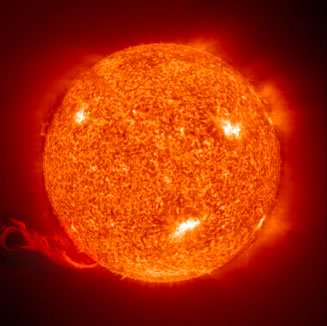
|
|
|
|
|
Utility-Scale Solar EnergySolar energy technologies potentially suitable for utility-scale applications include concentrating solar power technology and photovoltaic technology.
The sun radiates an enormous amount of energy through the process of nuclear fusion. The high pressure and temperature in the sun's core causes electrons to be stripped from hydrogen atoms, freeing the hydrogen nuclei to combine (fuse) to form one helium atom, producing radiant energy in the process. The sun radiates more energy in one second than the world has used since time began. Every hour the sun bathes the Earth in as much energy as the world consumes in an entire year. Solar radiation can be converted directly to usable energy through a variety of technologies, and that energy can be used for small-scale applications such as powering hand-held calculators, powering solar vehicles, or heating water for residential applications. Solar energy can also be used for large-scale commercial applications such as generating electricity in solar power plants. The Solar Energy Development Programmatic Environmental Impact Statement (PEIS) analyzes environmental impacts of utility-scale solar energy facilities only. Utility-scale solar energy facilities are facilities that can generate large amounts of electricity to be put directly into the electricity transmission grid. Solar energy technologies potentially suitable for use in utility-scale applications include concentrating solar power technologies and photovoltaic technologies. Concentrating Solar Power (CSP) TechnologiesCSP is a type of solar thermal technology. Solar thermal technologies convert light energy in sunlight to heat energy, and that heat energy is then used to perform work, for example, heating water. Utility-scale CSP technologies use mirrors to concentrate the sun's rays to heat fluids or solids, and the heat is used to drive steam turbines or other devices to generate power. See the Concentrating Solar Power (CSP) Technologies page to learn more about CSP technologies, including the different types of CSP technologies useful for commercial power generation.Photovoltaic (PV) TechnologiesPV technologies convert the sun's radiant energy directly to electricity, rather than first converting it to heat that is then used to generate electricity or to do other forms of work. PV technologies use solar panels to capture light energy from the sun, and then use that light energy to drive an electric current. See the Photovoltaic (PV) Technologies page to learn more about PV technologies, including the different types of PV systems useful for commercial power generation. |





